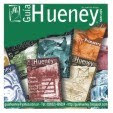by Roberto Espinosa
Writer-Environmental Specialist
Through a United Nations initiative, and with the purpose of studying environmental problems of our planet in an interrelated way, the "Brundtland Commission" began its work in 1983. The Commission spent several years travelling around different areas of the planet, interviewing experts, farmers, citizens and rulers. This work finished in 1987 with an important document entitled "Our Common Future", where environmental problems were linked with the international economy and development models.
The Commission concluded that environmental problems should be seen and treated from the point at which they originate, not from their consequences. They also point out that every time causes are dealt with, economic models are always involved . As a result, the proposal "Sustainable Development" has emerged. This proposal "meets present needs without compromising the satisfaction of the needs of future generations." This entails focusing on the social and ecological balance as a guarantee for a planet that needs to develop without endangering humans, who must live in harmony with other people, and with nature itself.
When defining the term "sustainable development", two fundamental ideas worth being remembered are raised:
First of all, the idea of "Needs" (meeting them). You cannot claim or guarantee to meet all the needs of a community, because there exist - in the second place - the idea of "limits", which are imposed by the carrying capacity of the ecosystem.
It could be argued that this capacity is modified by the technology incorporated into the productive activities - which would also allow to continue changing it - aided by the new social organization. Beware of these simplistic arguments!
Biosphere, as a whole, does not have a carrying capacity able support a population that requires water, soil, food and other goods, with no limits; it cannot support a population that produces large volumes of waste and pollutants, either. The use of nonrenewable natural resources (fossil fuels, mining), and the rate at which "renewable" ones are used -which have lost their renewal capacity - is alarming.
The Brundtland Report states that “it is particularly important to meet the essential needs of the poorest, being necessary to give priority to those who still have not satisfied the basic levels of their life quality."
Are we acting in this direction?
The United Nations Conference on Environment and Development, held in Rio de Janeiro in 1992, dealt with the Brundtland Report, and agreed that "all States and all people shall cooperate in the essential task of
eradicating poverty as an indispensable requirement for sustainable
development, in order to decrease the disparities in standards of living and
better meet the needs of the majority of the people of the world".
As we have seen, there are limits to the satisfaction of the needs of a community, which is typical of the low carrying capacity of the biosphere, as a whole. The resources that appeared to be inexhaustible are now disappearing systematically.
Then, the logical question that follows is: which needs should be covered first? The ones of those people who already have enough? Or the needs of over one billion human beings in the world, who have not covered their basic needs yet?










